24 Vs 32 Oz Water Bottle: Which Size Is Right for You?
Choosing between a 24 oz and a 32 oz water bottle hinges on your daily routine and hydration needs. The 24 oz bottle, about 9.5 inches tall and weighing 1.5 pounds when full, fits easily in backpacks and standard cup holders, making it great for short activities.
In contrast, a 32 oz bottle, heavier at 2 pounds and over 10 inches tall, reduces refill frequency and supports higher hydration, essential for longer activities or hotter climates. However, carrying a heavier bottle can lead to hand fatigue over time.
Consider these factors to determine which best meets your lifestyle demands.
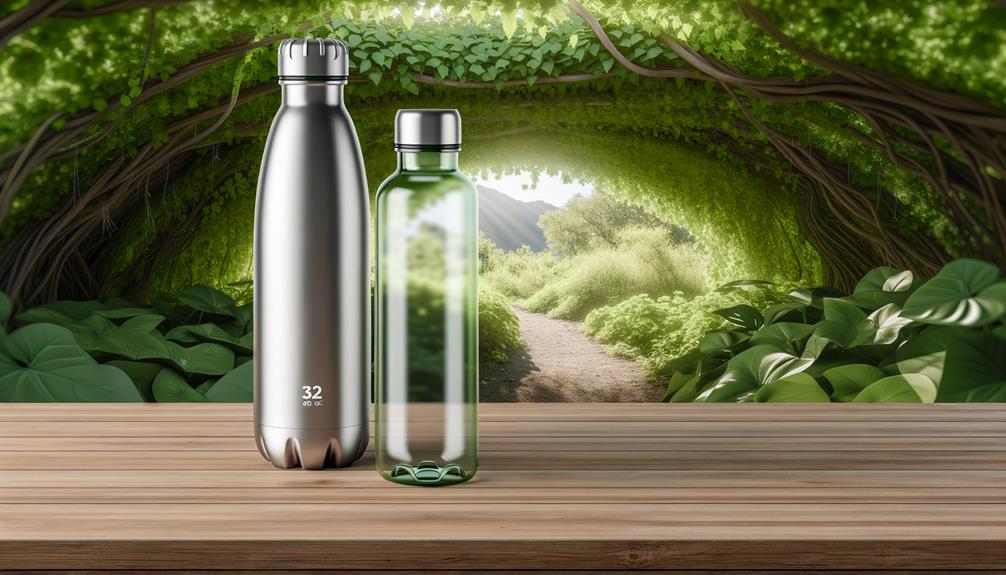
Key Takeaways
- The 24 oz bottle is more portable, fitting standard backpack pockets and car cup holders easily.
- A 32 oz bottle is better for tracking daily water intake, reducing refill frequency.
- The 24 oz bottle is lighter and easier to carry, weighing about 1.5 pounds when full.
- The 32 oz bottle is ideal for extended activities like day-long hikes, offering more hydration capacity.
24 Oz vs 32 Oz Water Bottle Comparison
| Feature | 24 Oz Water Bottle | 32 Oz Water Bottle |
|---|---|---|
| Capacity in Milliliters | 709.76 ml | 946.35 ml |
| Ideal for | Daily hydration | Extended activities and outdoor adventures |
| Weight (Empty) | Lightweight | Heavier but manageable |
| Portability | Compact and easy to carry | Bulkier but provides more water |
| Common Use | Workouts, daily trips | Long hikes, full-day outings |
| Fits in Cup Holders | Most cup holders | May not fit standard cup holders |
| Refill Frequency | More frequent | Less frequent |
Size and Portability
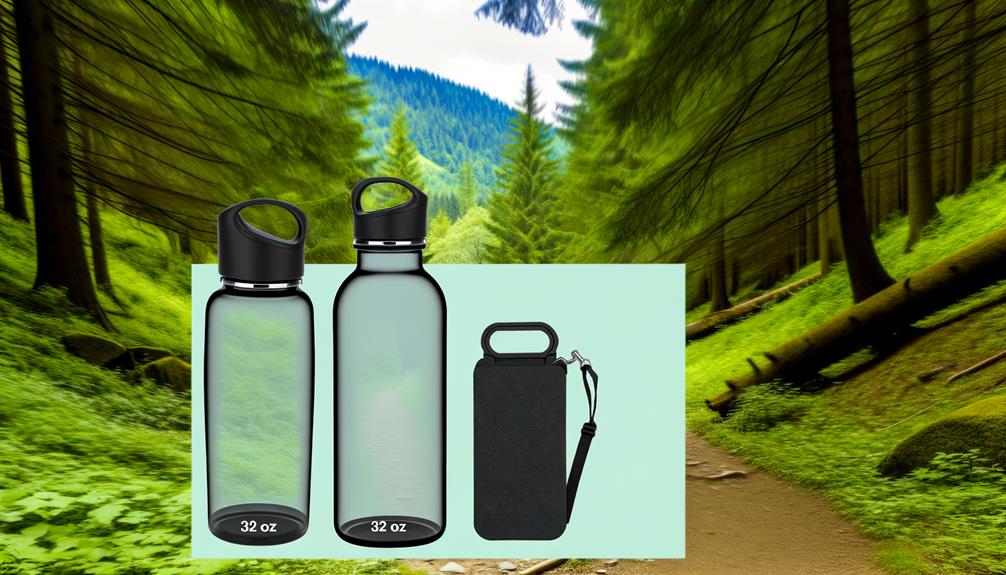
When considering the size and portability of water bottles, a 24 oz option offers considerably more convenience for everyday carry compared to its 32 oz counterpart.
The 24 oz bottle typically measures around 9.5 inches in height and 2.75 inches in diameter, making it easier to fit into standard backpack pockets and car cup holders.
In contrast, a 32 oz bottle often exceeds 10 inches in height and 3 inches in diameter, posing challenges regarding portability.
Weight is another important factor; when filled, a 24 oz bottle weighs about 1.5 pounds, whereas a 32 oz bottle can weigh up to 2 pounds.
This difference, though seemingly minor, greatly impacts ease of transport and overall user comfort.
Hydration Needs
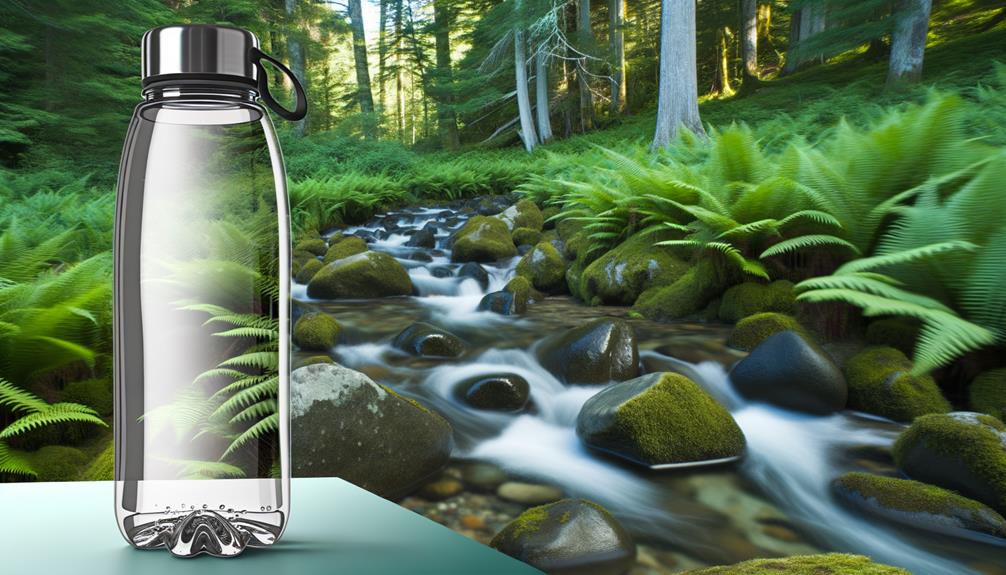
Meeting your hydration needs effectively depends on various factors, including activity level, climate, and personal health requirements.
On average, adults need around 2-3 liters of water daily. If you’re highly active or in a hot climate, your needs can increase considerably.
A 32 oz water bottle helps you track your intake better, ensuring you meet these requirements more efficiently. Scientific studies show that consistent hydration improves cognitive function, energy levels, and overall health.
Utilizing a larger bottle reduces refill frequency, promoting a habit of regular consumption. Conversely, a smaller 24 oz bottle might necessitate more frequent refills but could be more convenient for shorter outings.
Ultimately, aligning bottle size with your hydration demands is essential.
Weight and Handling
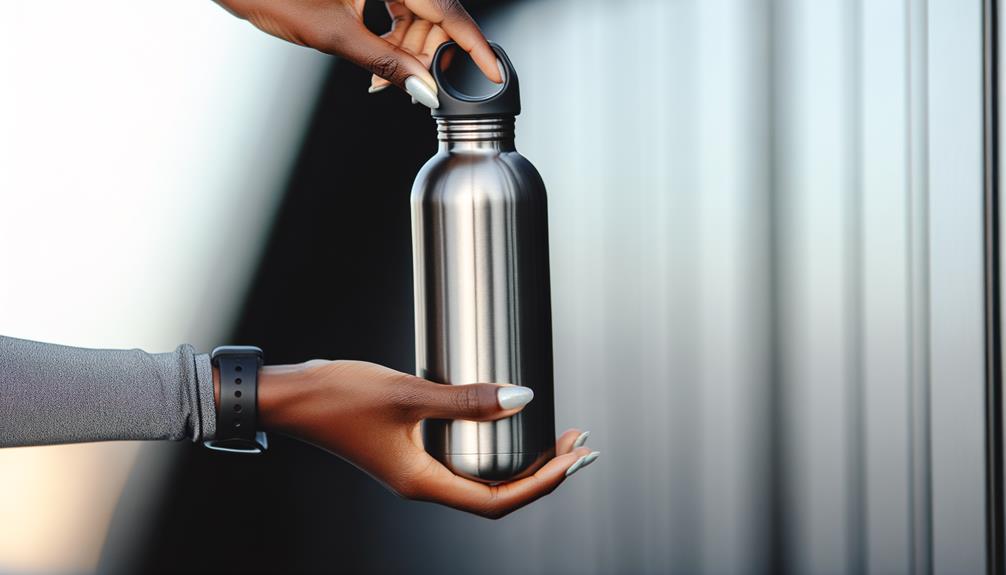
Balancing hydration needs with the practical aspects of weight and handling, a 24 oz water bottle typically weighs about 1.5 pounds when full, while a 32 oz bottle can weigh up to 2 pounds, impacting portability and ease of use.
You’ll notice that the extra half-pound can make a difference, especially during extended activities. Holding a heavier bottle for prolonged periods can lead to hand fatigue. Additionally, it may not fit into standard cup holders or backpack pockets, limiting its convenience.
On the other hand, a 24 oz bottle offers a more manageable weight, making it easier to carry and store.
Consequently, evaluating the weight-to-benefit ratio is vital when choosing a water bottle for daily use or specific activities.
Usage Scenarios

For ideal hydration during different activities, understanding the specific usage scenarios for 24 oz and 32 oz water bottles can guide you in making the right choice. The 24 oz bottle is great for shorter activities or when portability is a priority, while the 32 oz option offers a balance between capacity and convenience for longer durations. When considering a 32 oz vs 40 oz water bottle, the 40 oz version provides even greater hydration for extended adventures but may be bulkier to carry. Choosing the right size depends on your hydration needs, activity level, and how much weight you’re comfortable carrying.
The 24 oz bottle is best for shorter activities like a quick workout or a short hike, offering portability and ease of use.
On the other hand, a 32 oz bottle suits extended activities such as day-long hikes or long gym sessions, ensuring you stay hydrated without frequent refills.
Data shows the average adult requires about 2.7 to 3.7 liters of water per day; therefore, the 32 oz bottle covers a larger portion of daily hydration needs.
Choose based on your activity’s duration and intensity to maintain ideal hydration levels.
Environmental Impact
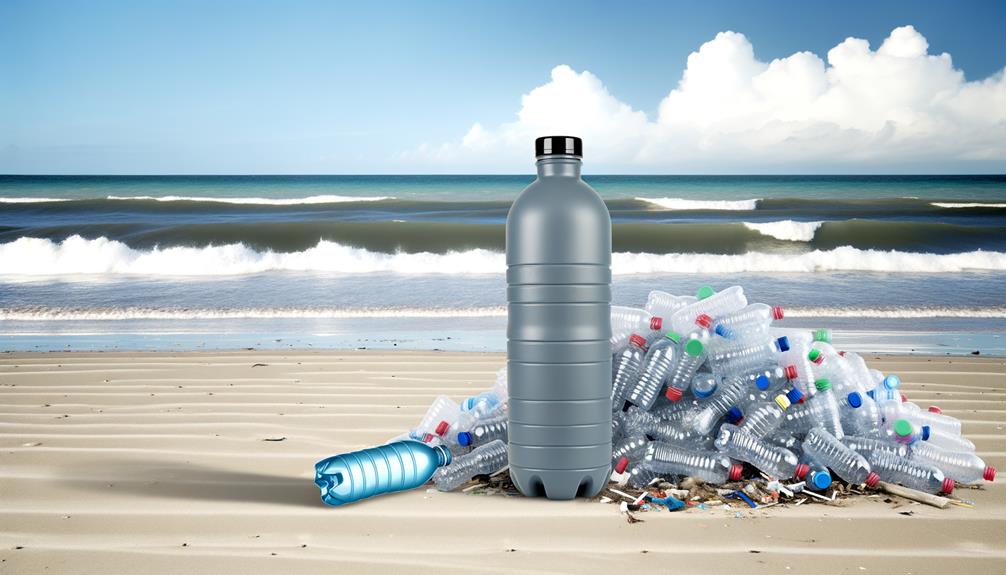
When evaluating the environmental impact of 24 oz and 32 oz water bottles, it’s crucial to take into account factors such as material composition, manufacturing processes, and end-of-life disposal options.
To give you a clear picture:
- Material Composition: Bottles made from recycled materials generally have a lower environmental footprint. Evaluate if the bottle uses PET, stainless steel, or BPA-free plastic.
- Manufacturing Processes: The energy and resources consumed during production matter. A 32 oz bottle might use more material, increasing its environmental load.
- End-of-Life Disposal: Consider recyclability and biodegradability. Larger bottles may have fewer disposal options if made from complex materials.
Conclusion
So, you’ve spent hours pondering the monumental decision between a 24 oz and a 32 oz water bottle.
Ironically, it’s not just about hydration but also about balancing your environmental footprint and workout efficiency.
The 24 oz is lighter and more portable, but the 32 oz saves you refill trips.
Either way, your ultimate choice will define your hydration strategy, as if selecting a water bottle is as essential as choosing a life partner.
Happy hydrating!





